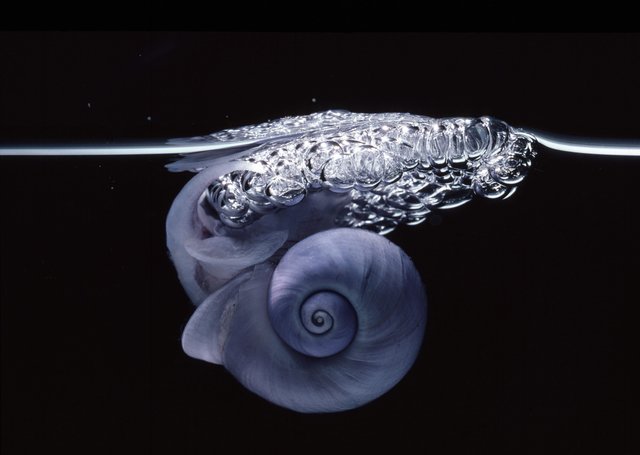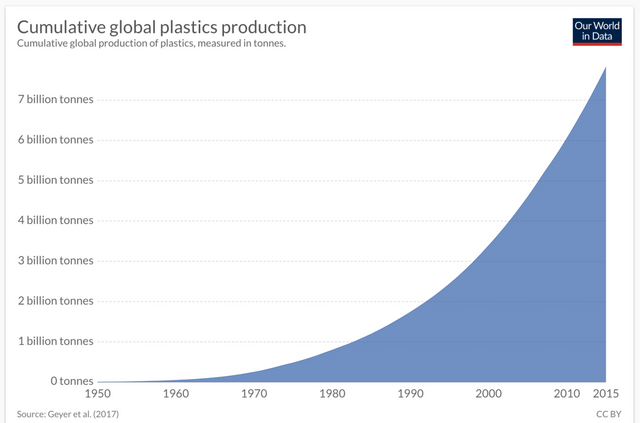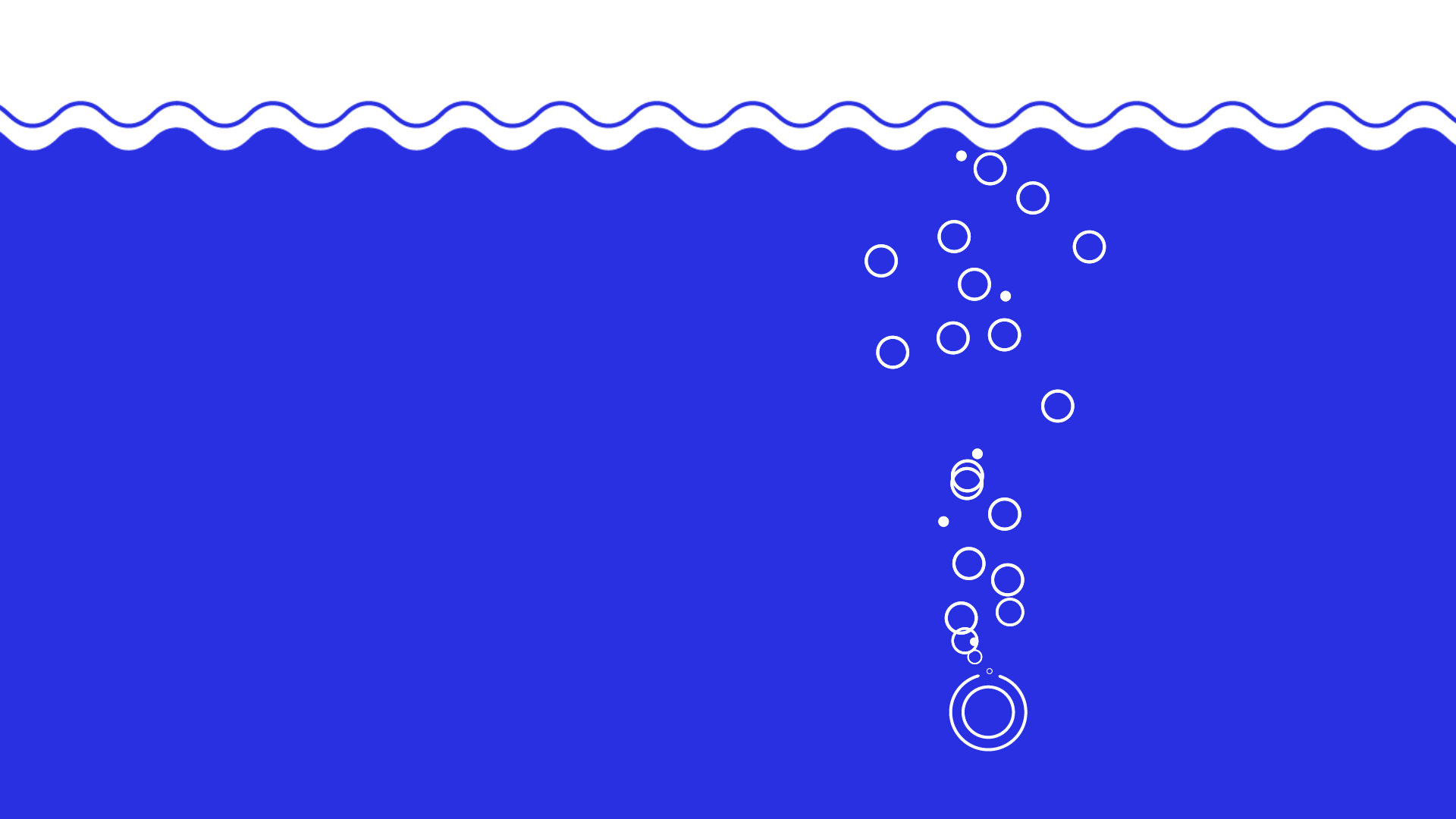the Truth about The Ocean Cleanup project: Possibly a Disaster for Marine Life
When I heard for the first time about Boyan Slat and his The Ocean Cleanup project, I was ecstatic, and somewhat proud it was a fellow Dutch man who took the first real steps to cleanup the big plastic soup in our ocean's.
However, since this morning, after reading a comprehensive article (source) by the one and only independent journalist platform The Correspondent of The Netherlands, I seriously doubt if The Ocean Cleanup shall continue.
While The Ocean Cleanup is at the forefront of massive role out of its cleanup solution, we shall seriously question the effectiveness of this solution as well as we shall reconsider the harm it can do to our marine life when 60 large scale plastic collectors are placed in sea.

The Purple Snail (Janthina) Photo: publiced by De Correspondent (source)
The Ocean Cleanup
The aim of The Ocean Cleanup is to clean our oceans of a large portion of all plastics floating around. With their solution, they make use of ocean currents. On macroscopic level, we can identify five water gyres (two in the Pacific Ocean, two in the Atlantic Ocean and one in the Indian Ocean). Within these gyres, garbage patches are formed with relative high concentration of debris including plastics. The team developed a huge device (600 meters long) with which the plastics are collected. Though the collection itself is not using energy, the collected plastics will be loaded on boats and ships for transportation to shore. Unfortunately, these boats and ships they will use, are far from environmental friendly. But that is maybe not the worst concern.
The Concern
I'll not gonna repeat what can be read in this extensive article I read this morning (source), but give you in my own words my take aways and what made me decide to write this article to live forever on our Steem blockchain without anybody being able to delete, remove or hide this at any given point in time.
One of my biggest concern is the fact the garbage/plastic collector is able to collect micro plastics of down to 1 millimetre in size. Sounds COOL, right? As we can read in the referenced article, the eggs of most of the sea life are larger than that, somewhere between 1 and 5 millimetres. I'm not (yet) talking about all the unknown sea life, but about the eggs of all those we know and eat like tuna, crab and lobster. This collector will not only collect the plastics, but also all these eggs.
And what will happen then? Will the eggs survive somehow? Marine biologists think these eggs will be eaten by the jellyfish which will also be caught, causing an explosion in new jellyfish being born while the number of fish being born will by reduced dramatically.
And what about all the beautiful pleuston sea life? And the plankton? Most of this sea life don't swim, but float and therefore the chances are high these - for the entire ecosystem - important organisms may be concentrated in the same areas as where the plastic ocean fields are; Something Boyan Slat and his team at The Ocean Cleanup are denying, but not providing any data to substantiate this.
Can you imagine what will happen when we take out large portions of plankton? What will the whales be eating?

Global Plastics Production (source)
Efficient?
Although The Ocean Cleanup states they will clean the oceans by 50% of plastics in a five year timeframe, the reality seems to be quite different (source):
The Ocean Cleanup does not in any way give us a plastic-free ocean. Far from. With its fleet of sixty Wilsons, it focuses on a gyre with 79,000 tons of plastic floating in it. It wants to clean up half of that in five years, that's 8,000 tons per year.
The UN says that people produce 300 million tons of plastic annually. Around 8 million tonnes of this ends up in the ocean. In the most favourable case, The Ocean Cleanup therefore clears 0.1 percent of what we dump into the sea every year.
To date, The Ocean Cleanup received more than 50 Million Euro in funding. 50 Million Euro! To cleanup 0,1% of the plastics that ends up in the sea? Without knowing what it will do to our sea life?
A Better Solution?
Interestingly, all plastics are produced at shore (obviously) and therefore can only reach the ocean when it is either thrown from some kind of boat or ship, from shore, or through rivers connected with the ocean's.
Research shows most of the plastic pollution comes through water from the rivers. Wouldn't it be much more efficient to clean the rivers?
Another Dutch company The Great Bubble Barrier invented a system that can be used at any point in a stream of water (small or large). It uses air to create an artificial wall which will trap plastics at the upstream side of this wall. Placing this wall diagonally in a river, the current will push the plastics to the side of the river where it can be collected easily. Maybe this is a much better system than The Ocean Cleanup is planning to roll out on a massive scale? For sure, I like for The Great Bubble Barrier to get more, much more attention as well as funding.
BTW, I'm very reluctant to state The Great Bubble Barrier is a good solution, since I didn't do enough in-depth research to understand what the downsides of this solution are, but it seems to me it tries to combat the problem closer to its sources, whilst it seems to be less harmful to sea and river life.

Concept of The Great Bubble Barrier (source)
Reading Material
The referenced article and some more resources to dig into when you are interested...
- The Article that started this post: The plastic catcher from Boyan Slat: ineffective, very expensive and possibly a disaster for marine life
- The Ocean Cleanup: Company Website
- FAQ by The Ocean Cleanup: FAQ Page
- The Great Bubble Barrier: Company Website
- The Ocean Cleanup: Criticism
- Marine Debris: Wikipedia
- Plastic Pollution: Our World in Data
ALWAYS QUESTION WHAT YOU HEAR AND READ
qsounds music library with more than 300 entries | A...K | L...Z |
steem blockchain curator for @illuminati-inc and @qsounds
They do this 3 - 4 times a day.
Stop it at the source.
100% agree with you! To clean up the world of plastics, we shall not only clean the results, but also change behaviours of people. By travelling the world, I was astonished when I saw companies (like hotels and restaurants) burn their waste, or simply throw it wherever they can. Being from Europe, we are also to blame. Recently it was in the news European companies sell the waste to Asian companies and some of these are dumping the waste again; The Malaysian government stated they wanted to do something against these companies, including the European; WTF? Can we let this happening by the EU and our governments? Few years ago, it was discovered waste is simply pushed into old caves or mixed with concrete used to build new buildings in Italy where the mafia is owning the waste business in the southern part of the country. Really? Is this still possible in the 21st century in the EU? Anyways, I believe all of use shall be more responsible, use less plastics, ask for bio degradable plastics instead, change the culture with bottom-up approach, while at the same time we shall do whatever is needed to make sure we do not damage the environment further and give people back nature so they can live in harmony with it.
This post was shared in the Curation Collective Discord community for curators, and upvoted and resteemed by the @c-squared community account after manual review.
@c-squared runs a community witness. Please consider using one of your witness votes on us here